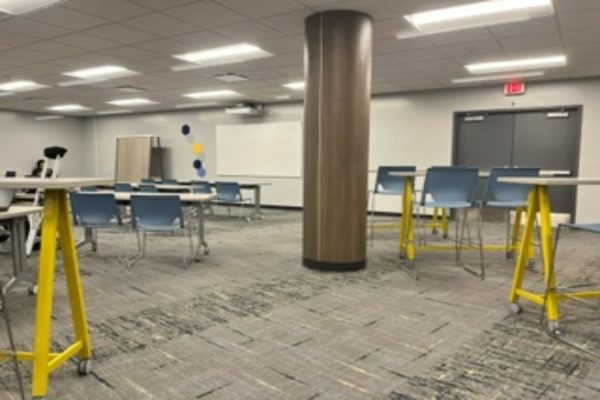Biden’s Infrastructure Bill- Benefit or Bust?
IMAGE / Photo courtesy of flickr.com
President Joe Biden presented the Americans Job Plan to Congress March 31.
$2.2 trillion is a lot of money. So if the federal government is going to spend it, we should know where it’s going and how it could affect us individually.
Over the last year, we’ve become increasingly dependent on internet based technologies- i.e. Google Apps like Classroom and Meet, Gmail, Docs, and Slides, or other platforms for working from home like Zoom Web Meetings- but for a lot of people across the United States and even within Michigan, internet access is either inconsistent or nonexistent. The American Jobs Plan designates approximately $100 billion to expand broadband internet access to rural areas that previously had none.
To compare, most people in our area operate with 4G internet access, and parts of the US are in the process of updating to 5G. Broadband is a step below 4G, with slightly slower operating speeds.
The $115 billion designated to improving roads and bridges across the country is coming, at least partially, to the mid-west. As Michiganders living in or near Flint, we know what it’s like to struggle with road quality and the effects an unexpected pothole can have on your vehicle.
During the after-effects of the devastating Flint Water Crisis, where hundreds of Michigan families were poisoned by lead pipes and poor water quality, it may come as a relief to hear that of the $111 billion intended to improve water infrastructure, $45 billion is allotted to replacing lead pipes across the country.
To put Michigan in perspective with the rest of the country, our 2018 letter grade score for infrastructure quality was placed at a D-. This comes after analysis of areas like schools, public transportation and roads, energy, water processing, and more.
By comparison, the overall United States scored a C-. As any parent, student, or teacher would tell you, there is definitely room for improvement here.
As good as all of these benefits sound, widespread internet access, improved roads and bridges, and updated water systems, this bill still faces an uphill battle in Congress. And it’s all about the price tag.
It’s hard to deny the benefits of the bill, but many republican senators and representatives are concerned about the effect a $2.2 trillion expenditure could have on our national debt- last totaled at $28.2 trillion.
Another priority of the American Jobs Plan is sustainability- investing in cars and energy sources (as well as jobs related to each) that are derived from more carbon-neutral sources. This and other aspects of Biden’s plan have created a sticking point for republican lawmakers.
“85% of it’s got nothing to do with infrastructure,” says South Carolina senator Lindsey Graham. He and many other republican lawmakers are concerned about the relevance of parts of the American Jobs Plan, claiming that they only serve to progress the liberal agenda, rather than genuinely improve American infrastructure.
Republicans have countered with a significantly smaller bill, totaling $600 billion. Their focus on more traditional infrastructure would exclude many of the green energy and internet based projects proposed in the larger White House bill.
Both sides of the aisle have conceded that their plans are only starting negotiations points, leaving them subject to change as the house and senate take both bills into consideration, but the priorities of each are clear.
















